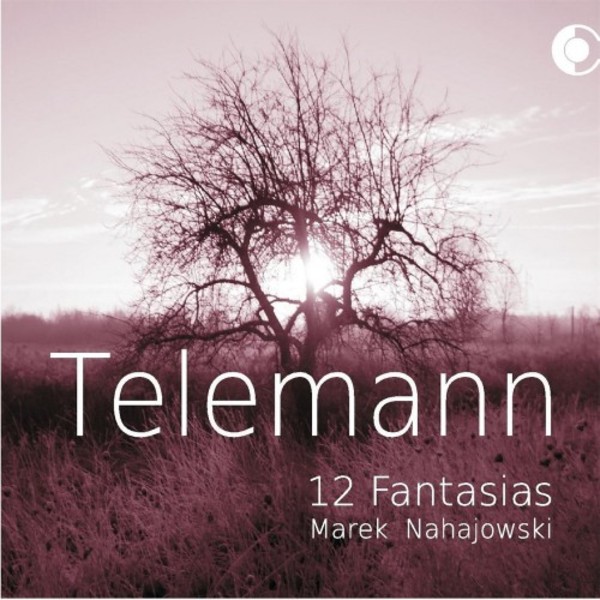
Telemann - 12 Fantasias for Solo Flute
£13.25
In stock - available for despatch within 1 working day
Despatch Information
This despatch estimate is based on information from both our own stock and the UK supplier's stock.
If ordering multiple items, we will aim to send everything together so the longest despatch estimate will apply to the complete order.
If you would rather receive certain items more quickly, please place them on a separate order.
If any unexpected delays occur, we will keep you informed of progress via email and not allow other items on the order to be held up.
If you would prefer to receive everything together regardless of any delay, please let us know via email.
Pre-orders will be despatched as close as possible to the release date.
Label: RecArt
Cat No: RA0009
Format: CD
Number of Discs: 1
Genre: Instrumental
Release Date: 1st November 2019
Contents
Artists
Marek Nahajowski (flute)About
That is how Johann Gottfried Walther described the genre of instrumental fantasia (Musikalisches Lexicon, Leipzig 1732). The opinion was not an isolated one. Most music theorists of the first half of the 18th century considered fantasias to be a kind of improvised music, or quasi-improvised one, characterized by almost complete freedom both in terms of their formal structure and musical expression. This point of view was also shared by Telemann’s friend, Johann Mattheson, who stated in his opus magnum (Der vollkommene Capelmeister, Hamburg 1739) that (…) pieces of that kind sound best if they are improvised, though they can be written down on paper. [As far as formal structure is concerned] they have so few limitations and so little order that it is hard to define them otherwise than just products of invention [of a performer, or composer]. For that reason they are marked with, first and foremost, (general) fancifulness.
On the other hand, however, in the works of numerous composers from the 17th century (not only, though) one can find examples of fantasias which have almost nothing in common with the idea of free improvisation (ex tempore), just to mention a contrapuntal texture of the 17th-century English Fancies written for viola da gamba ensembles in mind. In reality, the name ‘fantasia’ frequently covered various types of a formal structure and musical expression.
That is the case with the Flute Fantasias by Georg Philipp Telemann. These pieces are not only a display of the composer’s invention but also make an example of a particularly skillful synthesis of most contemporary stylistic conventions. Despite the fact that one can find numerous references to a typical layout of the late-Baroque sonata in most of them, the composer treated structural patterns with his characteristic inventiveness. In the works in question there are both free, quasi-improvisational fragments in the manner of a prelude or toccata and parts employing dance rhythms, melodious and affectionate Adagios, as well as fugues maintained in a ‘scholarly’ (gelehrt) style. From this perspective the idea of ‘fantasizing’ manifests itself as a peculiar synthesis of different forms of musical utterance where the mood of totally unhindered joy interweaves with melancholy; ‘scholarism’ of the structure – with bacchanalian impetuosity of dance; gentleness of a fine melody shows contrast with pathos of a French overture and symmetric phrases – with fanciful improvisational fragments and figural passages.
To be able to follow instrumentation guidelines and to remain faithful to the sound aesthetics of the epoch, we have made sole use of the recorder in F on this album. In nine fantasias we have applied a standard 18th-century transposition by a minor third up. The remaining three ones – number IV, V and XII – have been transposed to the key placed a fourth higher, owing to a more favourable tone.
Error on this page? Let us know here
Need more information on this product? Click here